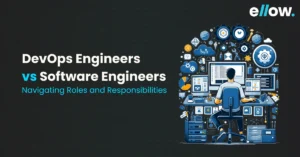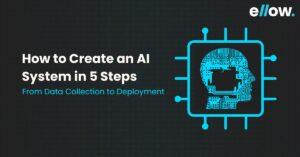
Blog
How to become a full stack developer?
- Vaishnavi Jonna
- March 10, 2024
- 4:53 pm
- No Comments
Full stack development is one of the high-demand jobs in the technology industry, featuring plenty of career growth and opportunities. Most organizations prefer to hire a full stack developer instead of hiring multiple resources. In simple terms, full-stack development is the culmination of front-end and back-end development of an application.
If you aspire to start your career as a full stack developer but are unsure where to start, we’ll break things down for you. In this article, we’ll not only discuss how to become a full stack developer but also explain what it is, the roles and responsibilities involved, the technical and soft skills needed.
Table of Contents
Who is a full stack developer?
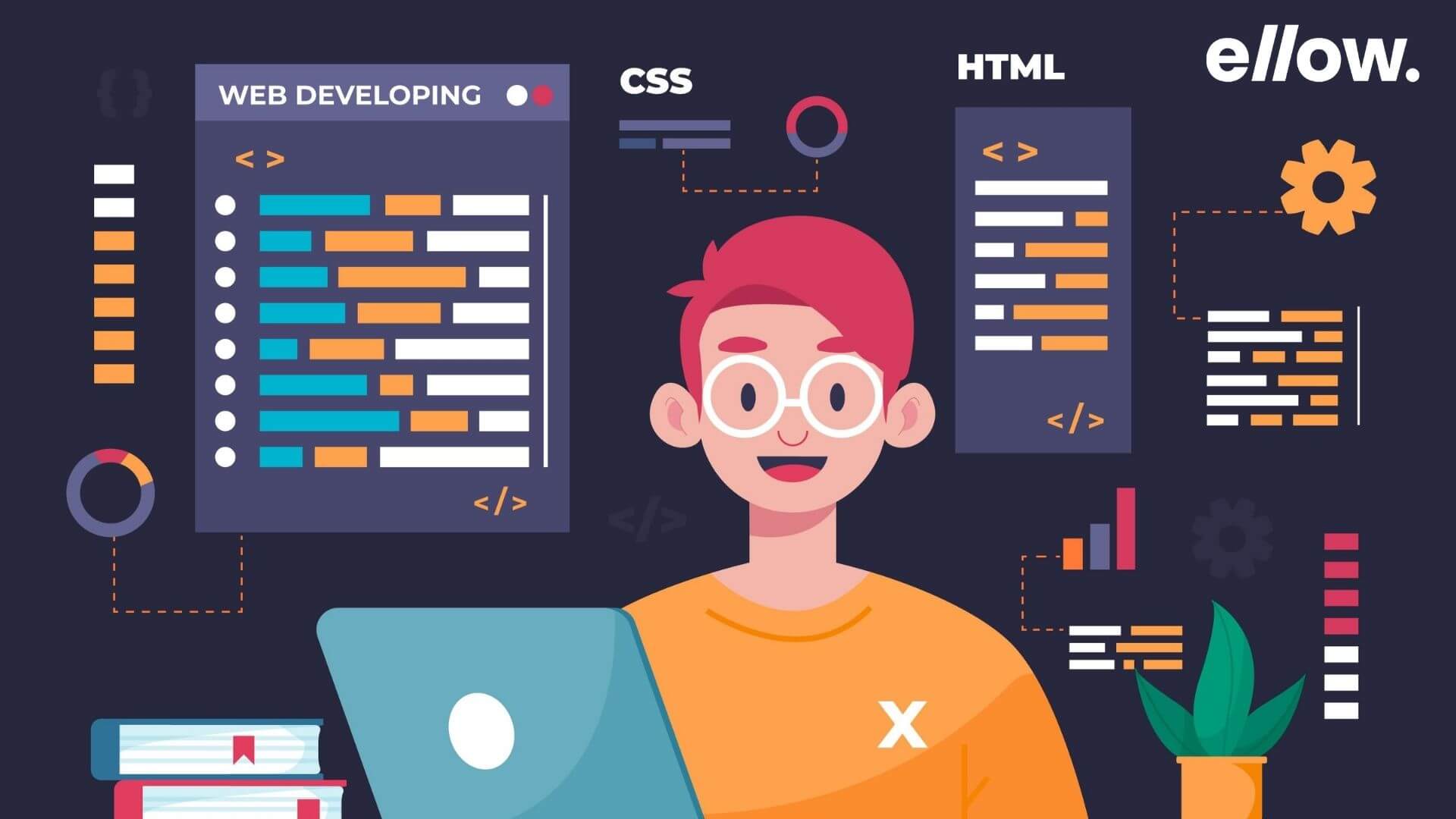
A full stack developer is a technical person who develops full-fledged applications. They have the potential to work on both the front-end and backend of the software application. These developers also deeply understand the technologies used to implement different components and layers in a software application.
Also read: 7 Books Every Software Developer Must Read Right Now
Client software (front-end) vs. Server software (backend)
A full stack developer deals with the creation of an application from its start to finish. He designs the front-end and the backend of an application, which are the two distinct classifications of web development.
| Client Software (Front-End) | Server Software (Back-End) |
|---|---|
| User interface for interacting with the system | Receives requests from the client and responds with data |
| Runs on the user’s device (e.g. web browser, mobile app) | Runs on a remote server or cloud platform |
| Responsible for rendering and displaying data | Responsible for processing and storing data |
| Typically written in languages like JavaScript, HTML, and CSS | Typically written in languages like Java, Python, Ruby, or C# |
| Handles user input and interactions | Manages database access and server-side processing |
| Requires an internet connection to communicate with the server | Can be accessed by multiple clients simultaneously |
| Limited access to system resources | Has full access to system resources and can perform complex operations |
| Examples include web browsers, mobile apps, and desktop applications | Examples include web servers, application servers, and database servers |
Client software (front-end)
The front-end of an application, also known as client software, is what the user sees and interacts with. Front-end development, in general, covers user-facing elements like graphical elements, design, and user interface.
HTML, CSS, JavaScript, Bootstrap, and various other frameworks and libraries are used in front-end development. A Full-stack developer should know how the software application should look and what the flow of an app should be.
Server software (backend)
The backend of an application, also known as server software, is the area of the website that is hidden from the users’ view. The back-end interacts with the front end to receive and send information to the web app.
A server, an application, and a database are the three main components that constitute the backend. A full-stack developer must have expertise in backend technologies which involves organizing and storing data and ensuring that everything runs robustly on the client side.
Roles and responsibilities of a full stack developer
Full-stack developers design and create end-to-end websites and applications. The role comprises overseeing a project from conception to culmination.
Here are some of the key roles and responsibilities:
- Use different front-end technologies, such as HTML, CSS, Bootstrap, JavaScript, etc., to create interactive user interfaces.
- Write clean, functional, and efficient code on front-end and back-end technologies.
- Design robust backend web architecture using different technologies to retrieve and process data from the servers.
- Create efficient backend databases and servers that are resistant to power outages and function endlessly.
- Ensure cross-platform compatibility by creating applications that work on different platforms, such as iOS, Android, Windows, and Linux.
- Responsible for designing and developing APIs or new product features.
- Build flexible applications that meet all the technical and consumer requirements.
- Collaborate with other departments on projects and sprints.
- Create security and data protection settings.
- Perform tests, troubleshoot software, and fix bugs or other coding issues.
Also read: Level Up Your Skills: Top 5 Java Certifications For Developers
How to become a full stack developer
Full stack developers are often called jack-of-all-trades and need to learn a few skills to become full-stack professionals. Some basic skills include acquiring knowledge of programming languages, knowing how to structure design, implementing stacks, and testing projects, depending on consumer requirements. Each skill they learn in the technology industry builds on the last.
Read further to learn about learning resources, necessary programming languages, creating a portfolio, building a resume, and preparing for an interview.
1. Learn full-stack development
There are multiple learning resources; you can choose how you want to learn full-stack development.
- Self-learning: You can save money by opting for a self-learning method using books, YouTube, podcasts, and at-home practice projects.
- Internships: You can also take up full stack development internships that offer a chance to learn on the job and get paid for it.
- Certification programs: If you are looking to start from scratch or brush up on a selection of skills, you can sign-up for full stack developer certification programs.
- Bootcamps: You can also consider enrolling yourself in a full stack developer bootcamp which is an effective way to sharpen existing skills or learn new ones. Bootcamps are less expensive than degree programs, and their three to six months’ timelines make for an efficient learning experience.
- Full stack developer courses: Lastly, you can take up full stack development courses, which are not only affordable but also come with instructor support who teaches from the basics to advanced level, providing a practical learning approach to the learners.
There are many online resources available to learn Full Stack Development, including online courses like Udemy, Coursera, and Codecademy, as well as developer communities like Stack Overflow and GitHub.
2. Learn programming languages
A full stack developer’s success is dictated by his willingness to learn new and emerging programming languages. The more programming languages you know, the more valuable you are to a potential employer.
Front-end programming languages: Front-end development dictates what the user sees, hears, and does. A full stack developer must have comprehensive knowledge of the programming languages to ensure the functionality of an application’s visual aspects. A full-stack developer is expected to understand the following front-end programming languages and frameworks:
Backend programming languages: A full stack developer must possess the knowledge of the primary backend programming technologies to ensure the websites remain functional. A full-stack developer is expected to understand the following backend technologies and frameworks:
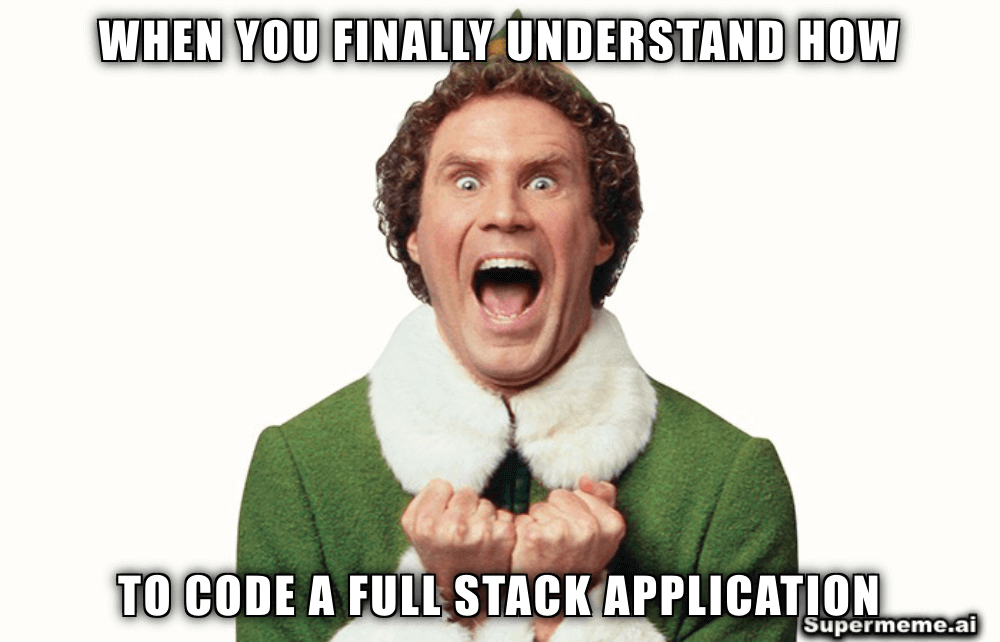
3. Create a portfolio
Your portfolio is your first impression. The goal of a successful portfolio is to showcase your skills. Portray your skills briefly about the technologies used and your role in the previous projects, and add screenshots of your project. Revisit it regularly to ensure it always highlights you at your best.
Here are some examples of projects you can include in your portfolio:
- E-commerce website: Create an e-commerce website from scratch, with features such as product pages, shopping cart, checkout, and payment integration.
- Social media platform: Build a social media platform that includes user authentication, profile creation, content creation, commenting, and sharing features.
- Online marketplace: Develop an online marketplace that connects buyers and sellers, with features such as product listings, search, messaging, and payment processing.
- Project management tool: Build a project management tool with features such as task management, team collaboration, and progress tracking.
- Chat application: Develop a real-time chat application that allows users to send messages and share files.
- Online booking system: Build an online booking system for a service-based business such as a salon or restaurant, with features such as appointment scheduling, reminders, and cancellations.
- Weather app: Develop a weather app that provides current weather conditions, forecast, and alerts.
These are just a few examples of projects that you can include in your portfolio. Be sure to choose projects that showcase your strengths and interests as a full-stack developer.
4. Build your resume
When you apply for a job, the recruiter will first ask for your resume. An excellent resume will fill in all the gaps left over from your portfolio. Remember to elaborate on your professional history, education, and technical skillset on your resume. A well-edited and well-organised resume can reveal a lot about your personality.
5. Prepare for your interview
Nailing a job interview takes more preparation and practice. Research well about the company, prepare questions, and rehearse answers to the most common full-stack developer interview questions. Also, knowing about the job role and what the company expects from you might present you in a favourable light.
Check out this great resource! It’s full of valuable interview questions that can help you hone your skills and prepare for the big day.
Do I need a degree to become a Full Stack Developer?
While having a degree in computer science or a related field can be helpful, it is not always necessary to become a Full Stack Developer. Many successful developers have learned through self-study and practical experience.
Is there a set timeline to become a full stack developer ?
The answer to the above question depends on a person’s ability to comprehend information, their chosen training methods, and their commitment level.
There is no set timeline to become a full stack developer as it depends on various factors such as your prior experience, education, learning speed, and the resources available to you.
Becoming an expert in full-stack development can be a lifelong pursuit, but for some people, it might take anywhere from six months to two years, and their ability to learn new technologies.
10 Essential skills of a full stack developer
Employers expect full stack developers to be skilled in a few key areas and take on multiple roles. Along with proficiency in programming languages, full stack developers also need a basic understanding of web design, web architecture, and database management. Hence, it would be best if you started by mastering the following 10 essential skills:
- Front End Development
- Back End Development
- Git and GitHub
- HTTP and Rest
- Web Architecture
- Database Storage
- Basic Web Design
- Version Control Systems (VCS)
- Application Programming Interfaces (API)
- Node Package Manager (NPM)
Soft skills of a full stack developer
Here are some of the soft skills you’ll want to develop, along with technical skills, if you’re on the path to becoming a full-stack developer.
- Understanding of database structure, algorithms, and processes
- Familiar with database management and design
- Good communication and management skills
- Adaptiveness to changes in technology and environment
- Problem-solving and analytical skills
- Leadership and resource management skills
- Must have a learning attitude and improvement mindset
- Knowledge of other aspects, such as security, automation, testing, performance, optimization
Are you a full stack developer looing for a remote full time or freelancing job? Don’t worry, we have got your back, contact us at sales@ellow.io to know more
Job Opportunities for Full Stack Developers
Full-stack developers are in high demand in today’s job market due to their ability to handle both front-end and back-end development tasks.
In this section, we will discuss the job opportunities for full-stack developers, the skills employers look for in full-stack developers, and the salary expectations for full-stack developers.
The current job market for full-stack developers:
The job market for full-stack developers is growing rapidly, with more and more companies seeking candidates who can work on multiple aspects of a project. This is especially true for startups and small businesses where full-stack developers are highly valued due to their versatility and ability to work with limited resources.
In addition, many established companies are also seeking full-stack developers to streamline their development processes and reduce the need for multiple developers.
The skills employers look for in full-stack developers:
Employers typically seek full-stack developers who possess a broad range of skills and experience in both front-end and back-end development.
Some of the key skills employers look for in full-stack developers include proficiency in programming languages such as JavaScript, Python, Ruby, and PHP, as well as experience with databases, server-side frameworks, front-end frameworks, and version control systems.
Employers also look for candidates who have experience working in an agile development environment and possess excellent problem-solving skills.
Salary expectations for full-stack developers:
Salaries for full-stack developers can vary depending on factors such as experience, location, and company size.
According to Glassdoor, the average salary for a full-stack developer in the United States is around $100,000 per year, with entry-level salaries starting at around $70,000 per year and experienced developers earning upwards of $130,000 per year.
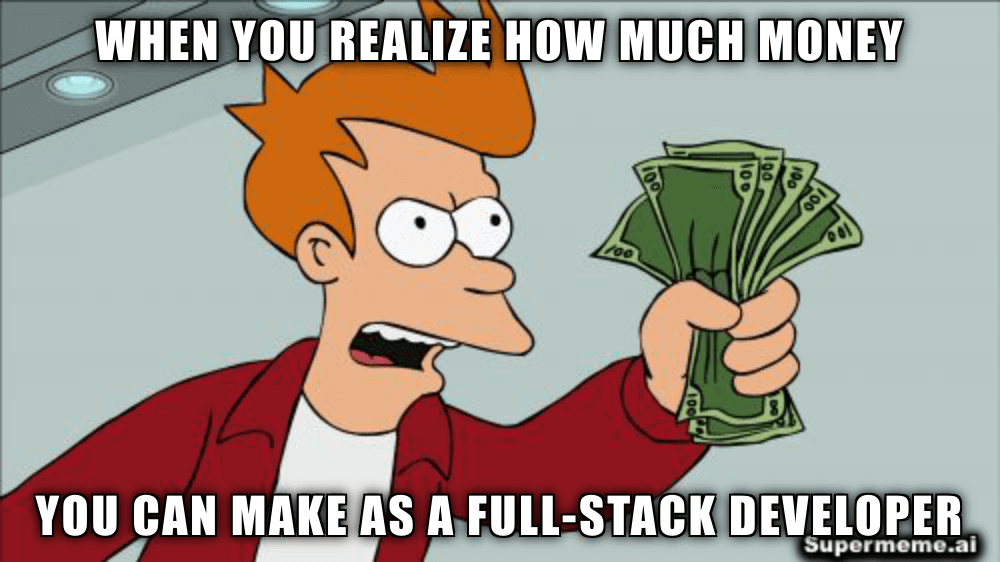
In addition, full-stack developers who possess additional skills such as mobile development, cloud computing, or DevOps can earn even higher salaries.
Conclusion
In conclusion, becoming a full stack developer can be a lucrative career choice with numerous opportunities for growth and learning. A full stack developer is responsible for designing and developing end-to-end websites and applications, working on both the front-end and back-end of software applications.
To become a full stack developer, one needs to acquire knowledge of programming languages, web design, web architecture, database management, and soft skills such as communication, adaptiveness, problem-solving, and leadership.
While a degree in computer science or a related field can be helpful, it is not always necessary, and there are various resources available to learn full-stack development.
FAQs on Full Stack Developer
In full stack development, a developer needs to learn HTML, CSS, JavaScript, React JS, and jQuery for the front-end and Python, Java, PHP, SQL, and Ruby for the back-end
With prior skill and experience in software development, a degree in computer engineering is not a necessity.
Yes, you can. With talent-marketplace like ellow, you can work for global organizations directly from your home.
While it’s not necessary to learn multiple programming languages to become a Full Stack Developer, having knowledge of more than one programming language can be an advantage. Different programming languages are suited for different tasks, and being able to choose the right language for a particular task can make you a more valuable developer.
Yes, it’s possible to specialize in a particular area of Full Stack Development, such as front-end development, back-end development, or database development. However, having a broad understanding of all aspects of web development can make you a more versatile developer and increase your job prospects.
